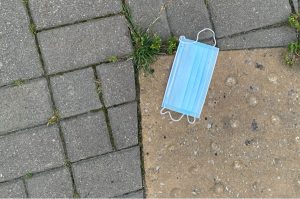 At the time I’m writing this article it has been officially 226 days since the World Health Organization (WHO) declared the novel coronavirus (COVID-19) outbreak a global pandemic. It seems almost impossible that there is a person on Earth that haven’t been affected by the coronavirus, but we’re not the only ones who suffer. As we have to adapt to the “New Reality”, it appears that our actions to stop the virus had a negative impact on the environment.
At the time I’m writing this article it has been officially 226 days since the World Health Organization (WHO) declared the novel coronavirus (COVID-19) outbreak a global pandemic. It seems almost impossible that there is a person on Earth that haven’t been affected by the coronavirus, but we’re not the only ones who suffer. As we have to adapt to the “New Reality”, it appears that our actions to stop the virus had a negative impact on the environment.
Cleaner air and water
Back in February and March, when people worldwide started going on lockdowns, satellites found decreases in air pollution. Cleaner air and increased visibility were perhaps the greatest positive effect of the lockdowns on the environment. Images like the ones of the Himalayan range seen from cities, where the mountains had’t been seen from there for 30 years due to the pollution finally came back. Cleaner water in urban areas resulted in dolphins reappearing in the Venice canals.
Liberated wildlife took over places that they had avoided, like a herd of marauding goats that decided to move into a seaside town in Wales.
All of these benefits came from the declines in industrial, transportation and business activities. Reduced numbers of atmospheric nitrogen dioxide, less sediment clouding in waterways, and China’s carbon emissions falling by almost 25 percent over the four weeks of the 2020 are definitely impacts that we should be proud of – it seems that when people move back in, the nature moves back out. However, let’s not forget about the negative impact that the pandemic – and more specifically our actions to suppress it – had on the environment.
Disposable masks pollution
Although the air appears cleaner, our oceans are suffering. Disposable masks and latex gloves have been found floating on the water surfaces like jellyfish, and beneath the Mediterranean sea hundreds of gloves, masks and bottles of hand sanitizer had been mixing with the usual marine litter like aluminum cans, styrofoam and plastic bags.
Scientists predict that disposable masks have a lifespan of about 450 years, which means that they definitely fall into the category of “ecological timebombs” as they have a long-lasting, negative consequences on our planet.
 The promotion of masks as a way to slow down the process at which COVID-19 spreads has led to a dramatic increase in the production and sales of disposable masks. United Nations Conference on Trade and Development (UNCTAD) which is the United Nation’s trade body, estimated that in 2020 the global sales made form disposable masks will total at around $166 billion. For comparison, in 2019 it was around $800 million.
The promotion of masks as a way to slow down the process at which COVID-19 spreads has led to a dramatic increase in the production and sales of disposable masks. United Nations Conference on Trade and Development (UNCTAD) which is the United Nation’s trade body, estimated that in 2020 the global sales made form disposable masks will total at around $166 billion. For comparison, in 2019 it was around $800 million.
More than half of us wear disposable face masks, as they are probably the most comfortable. You go to the store, buy a pack of 50 and use one per day (even though you should change them every 3 to 4 hours) and then you throw them away. Easy-peasy.
However, not everyone throw them into trash cans or other garbage disposals. A lot of these face masks end up on the streets. If you take a walk around your neighborhood right now, I bet you will find at least one disposable mask lying on the pavement. Actually, I bet that you will find at least five.
As we hit the second wave of coronavirus, with more and more cases being reported every day and all of Poland being in the Yellow Zone we are all obligated to wear face protection – be it masks, helmets or some kind of cover – when we’re outside, in order to prevent geerms from spreading.
Problems with recycling
Unfortunately, disposable face masks are not recyclable. Whether your mask is blue, white or pink it is made of a non-woven synthetic fabric, usually polypropylene. That’s a more fancy name for a kind of plastic.
That is why I would like to encourage you all to wear reusable masks. Made of linen, cotton or something in between, it can even be a scarf or a hand towel wrapped around your nose and mouth – anything can be reworn multiple times.
The only thing you need to remember is to wash it as often as possible – at the end of each day, or every two days. The important thing is to WASH IT. This way you will clean it from any germs that are sticking to it and thus maintain a sanitized environment.
Remember, pandemic is temporary. Plastic lasts forever.
Monika Jaworska, IB1